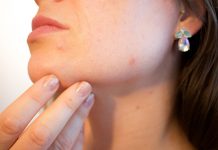Vaginal changes during menopause represent just one of several physical changes you may experience as your menstrual cycle begins to cease.
You can prepare yourself as much as possible by learning about the different menopause symptoms, what is normal and what indicates you may need to talk with your doctor.
In this article, learn about the most common vaginal changes during menopause as well as how to keep your vagina healthy all throughout this important stage of life.
The Most Common Vaginal Changes During Menopause

“Interestingly, vaginal dryness may not initially show up as dryness at all, but rather as sensations of itchiness or irritation”
Perimenopause can look very different from one woman to the next. Your menopause symptoms can and probably will vary from what your friend, mother or neighbor experiences.
Yet some symptoms are sufficiently common that most women will experience them to some degree, including these three changes.
Vaginal dryness
As Prevention Magazine reports, vaginal dryness is a fairly universal complaint most women will experience. This is due to fluctuating hormone levels, especially the primary reproductive hormones estrogen and progesterone.
Interestingly, vaginal dryness may not initially show up as dryness at all, but rather as sensations of itchiness or irritation. The itching and irritation is caused by drying tissues.
Pain during intimacy or while urinating can be especially troublesome symptoms of vaginal dryness. But it is important to know you are not just stuck having to live with your suffering.
Change in odor
“UTIs & bacterial vaginosis occur more frequently when vaginal tissues are undergoing changes during perimenopause”
Berkeley Wellness outlines some common reasons for a change in your vaginal odor, one of which is hormonal changes linked to menopause.
One rather shocking symptom that can cause odor is vaginal discharge. This discharge is linked to declining levels of estrogen and can be an attempt by the body to lubricate drying tissues.

The discharge may also point to a developing infection. Two of the most common are UTIs (urinary tract infections) and BV (bacterial vaginosis), both of which can occur more frequently when vaginal tissues are undergoing changes during perimenopause.
Reduced mucus
Healthline addresses changes in vaginal mucus with the onset of perimenopause, outlining how mucus may change in quantity as well as color and odor.
Premenopause healthy vaginal mucus levels are likely to be higher and mucus is typically low in odor and a whitish or clear color. With the onset of perimenopause, mucus is generally reduced in quantity, has a more pronounced odor and can change in color to a thin, brown discharge.
How to Keep Your Vagina Healthy During Menopause
Modern medicine has several tools to offer to combat vaginal dryness, changes in vaginal odor and changes in quantity of vaginal mucus.
“While many women still tend to say less rather than more about vaginal symptoms during annual wellness checks, thankfully this trend is at last changing”
Over-the-counter lubricants can definitely ease dryness or irritation before and during intimacy. Similar OTC moisturizers can help re-moisturize your vaginal tissues at other times. Often you only need to use these once every few days to maintain the moisturizing effect.
Estrogen taken internally or topically can also be helpful in addressing all three menopause symptoms. But many women do not realize that, in addition to traditional pill-form HRT (hormone replacement therapy), there are estrogen-based topical creams you can use locally in the vaginal area as well.
Hormone replacement therapy is sometimes prescribed to combat a wider range of symptoms including but not limited to vaginal dryness, odor or mucus reduction.
Dietary changes can help combat vaginal symptoms as well. You will want to be sure to stay well hydrated to promote healthy vaginal tissues and flush out toxins your drier tissues are less able to repel. Reducing caffeine, alcohol and tobacco intake can also reduce these substances’ drying impact on tissues.

Wearing the right clothing, including looser-fitting, moisture-wicking undergarments and outer garments, can promote airflow to the vaginal area and reduce the likelihood of contracting a vaginal infection.
While many women still tend to say less rather than more about vaginal symptoms during annual wellness checks, thankfully this trend is at last changing. You have every right to feel comfortable and healthy and receive treatment tailored to your symptoms.
Be sure to tell your doctor about vaginal symptoms you may be experiencing and discuss the possible options for experiencing relief. If one treatment doesn’t deliver the desired results, keep trying until you find what works.





















